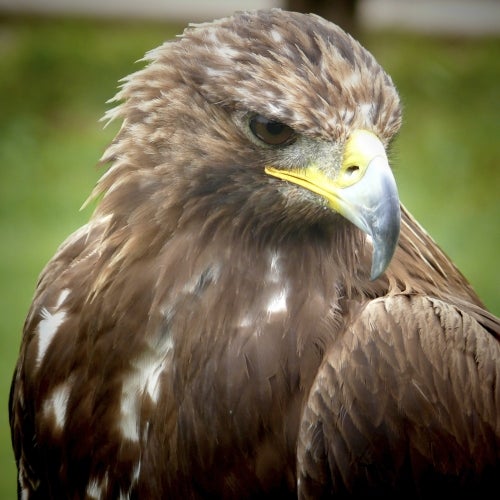Collisions with wind turbines kill about 100 golden eagles a year in some locations, but a new study that maps both potential wind-power sites and nesting patterns of the birds reveals sweet spots, where potential for wind power is greatest with a lower threat to nesting eagles.
Brad Fedy, a professor in the Faculty of Environment at the University of Waterloo, and Jason Tack, a PhD student at Colorado State University, took nesting data from a variety of areas across Wyoming, and created models using a suite of environmental variables and referenced those against areas with wind-development potential. The results of their research appear in PLOS ONE.

Photo credit: Xavier Fargas/iStock/Thinkstock
Increased mortalities threaten the future of long-lived species and, when a large bird like a golden eagle is killed by wind development, the turbine stops, causes temporary slowdowns and can result in fines to operators.
“We can’t endanger animals and their habitats in making renewable energy projects happen,” said Professor Fedy, a researcher in Waterloo’s Department of Environment and Resource Studies. “Our work shows that it’s possible to guide development of sustainable energy projects, while having the least impact on wildlife populations.”
Golden eagles are large-ranging predators of conservation concern in the United States. With the right data, stakeholders can use the modelling techniques the researchers employed to reconcile other sustainable energy projects with ecological concerns.
“Golden eagles aren’t the only species affected by these energy projects, but they grab people’s imaginations," said Professor Fedy. "We hope that our research better informs collaboration between the renewable energy industry and land-management agencies.”
An estimated 75 to 110 golden eagles die at a wind-power generation operation in Altamont, California each year. This figure represents about one eagle for every 8 megawatts of energy produced.
Professor Fedy’s map predictions cannot replace on-the-ground monitoring for potential risk of wind turbines on wildlife populations, though they provide industry and managers a useful framework to first assess potential development.
About the University of Waterloo
In just half a century, the University of Waterloo, located at the heart of Canada's technology hub, has become one of Canada's leading comprehensive universities with 35,000 full- and part-time students in undergraduate and graduate programs. A globally focused institution, celebrated as Canada’s most innovative university for 23 consecutive years, Waterloo is home to the world's largest post-secondary co-operative education program and encourages enterprising partnerships in learning, research and discovery. In the next decade, the university is committed to building a better future for Canada and the world by championing innovation and collaboration to create solutions relevant to the needs of today and tomorrow.
Media Contact:
Email: Pamela Smyth
University of Waterloo
519-888-4777
University of Waterloo News
Twitter: @UWaterlooNews
Attention broadcasters: Waterloo has facilities to provide broadcast quality audio and video feeds with a double-ender studio. Please contact us to book.